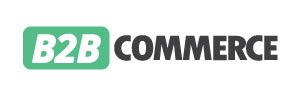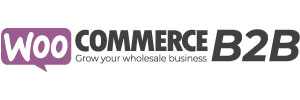As merchants grow their service, so does their innovation stack. The majority of merchants have multiple software application systems to run their business to help with everyday tasks like stock management, order processing, shipping, accounting, payment processing and customer management. The list keeps going.
Among the more crucial technology investments you make remains in Sage 200. Your Sage 200 can rapidly become the foundation of your company and where most your processes are looked after like orders, inventory, monetary, customer, and supplier info. The obstacle then is how you share the details from your ERP into your other crucial systems like your eCommerce, POS, and 3PL systems.
Many turn to system integration to automate data between their systems, however Sage 200 combination projects can appear frustrating. If you’re thinking about integrating your Sage 200, learn what the benefits and difficulties are of integration projects.
What is Sage 200 Integration?
Your Sage 200 holds much of the important data for your retail business. It’s where you create products, ship orders, track inventory, and manage finances. That same information though needs to be shared across other systems in your business. Order shipping/tracking must post back to your eCommerce platform for online orders. Inventory counts from Sage 200 need to update on all your online storefronts. Product information must be listed on your website.
Sage 200 integration then allows merchants to sync data and automate business processes between Sage 200 and other critical business systems. For example, when someone buys an item online, your inventory levels should decimate in Sage 200 and then any other channel where you sell that same product.
System integration is achieved by understanding how each of your systems receives data and what fields of data must be read or written to between endpoints.
Without integration of Sage 200, most of the data in your Sage 200 is transferred between your systems by manually hand-keying it, which is an inefficient process.
What Are The Benefits of Sage 200 Integration for Retail
Sage 200 holds much of the crucial data for your retail service. It’s where you create items, ship orders, track stock, and manage finances. That exact same info though needs to be shared across other systems in your business. Order shipping/tracking should publish back to your eCommerce platform for online orders. Stock counts from your ERP need to upgrade on all your online storefronts. Item information need to be noted on your site.
Sage 200 combination then enables merchants to sync information and automate organization processes in between Sage 200 and other important business systems. For instance, when someone buys an item online, your inventory levels must decimate in your ERP and after that any other channel where you offer that exact same product.
System combination is achieved by understanding how each of your systems receives data and what fields of data need to be read or written to between endpoints.
Without combination of Sage 200, most of the data in Sage 200 is moved in between your systems by manually hand-keying it, which is an inefficient procedure.
How Do You Eliminate Manual Data Entry?
The main benefit of Sage 200 integration is that it eliminates manual data entry so you’re not hand-keying the same data from one system to the next.
Saves Time
Real-time automation in between your system can significantly save you time– like 40+ hours a week lost on information entry. You won’t be decreased by manual data entry. This is particularly important when upgrading stock, stabilizing the books, or listing new products.
Data Accuracy
When by hand entering information, it’s simple to make typos that leads to serious repercussions like delivering the wrong item or to the wrong address. Combination makes sure that your information is always precise as it moves between systems.
Data Visibility
Merchants require to make vital choices rapidly such as when to move stock to one location over another. Integration guarantees you have presence into precise data, when you require it.
Overall, Sage 200 integration is very important in improving your operations. You’ll speed up information processing time and ensure data accuracy across your whole organization.
What Are The Challenges of Sage 200 Integration for Retail
Sage 200 is robust software. This is part of the reason they have the ability to manage a lot of different processes for retailers. However, the architecture of your ERP can also make integration jobs challenging work. Learn more listed below.
Cloud-based vs Legacy Sage 200
In general, ERPs with open and robust APIs will be much easier to integrate into other systems with APIs. A robust API is more possible to read and write to different data fields in between systems.
Legacy, on-premise ERPs might not have an API offered or have a tough one to work with. In other words, your system will be more difficult to write to and get information from. This can limit what data you can integrate in between your systems. Tradition ERPs may require SFTP or file-based combination, which is a less modern-day method to move data between systems.
Custom or Proprietary Software
Lots of endpoints, particularly Sage 200, permit merchants to deploy proprietary APIs, database tables, add-ons, apps/plugins, and so on. These customized or exclusive requirements can make integration tasks more challenging given that they must represent your customizations. As you assess combination providers, make certain to ask in advance how your supplier will represent these.
Complexity of Data
Some merchants have more complex data requirements such as working with a network of suppliers or buy online, pickup in-store programs.
While scenarios like these can make integration projects more costly or time-consuming, they by no means should prevent you from integrating your systems. If you have them though, it’s important to consider how your integration provider will handle them.
In some cases, especially if you’re using an on-premise legacy Sage 200, it might be a good time to upgrade to a new system. For growing retailers, integration is crucial to improving your operations to keep up with demand. You don’t want Sage 200 holding you back from connecting your systems and automating your processes. Check out this article on how to evaluate Sage 200 for your retail business.












